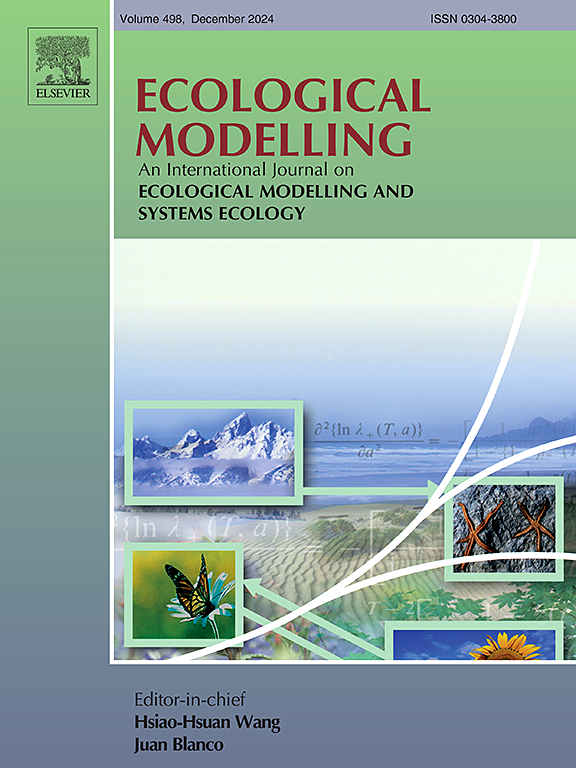Ubi es, room to roam? Extension of the LPB-RAP model capabilities for potential habitat analysis
IF 2.6
3区 环境科学与生态学
Q2 ECOLOGY
引用次数: 0
Abstract
The Anthropocene presents challenges for preserving and restoring ecosystems in human-altered landscapes. Policy development and landscape planning must consider long-term developments to maintain and restore functional ecosystems, ideally by using wildlife umbrella species as proxies. Forest and Landscape Restoration (FLR) aims to support both environmental and human well-being. However, the impact of FLR on wildlife umbrella species and their movement potential should be assessed in its potential magnitude for effective conservation.
For this purpose, we introduce the LPB-RAP model expanded for potential habitat analysis in smallholder-dominated forest landscapes. It focuses on ecosystem fragmentation and landscape connectivity using Circuit Theory-based methods. LPB-RAP, based on a Monte Carlo framework, enables comprehensive habitat analysis for different SSP-RCP and policy scenarios with a broad analysis spectrum for anthropo- and biosphere aspects. It simulates dichotomous landscapes with and without potential FLR for consideration in long-term planning horizons.
As an implementation example serves Ecuador's Esmeraldas province, using the Jaguar (Panthera onca) as a target umbrella species within an SSP2-RCP4.5 narrative. The simulation period covers 2018 to 2100 in annual and hectare resolution. The years 2024 and 2070 were chosen as probing dates for the extended habitat analysis.
Results indicate that an agroforestry-based FLR scenario to increase forest cover while benefiting forest ecosystems and people would only marginally improve the movement potential for female Jaguars due to their avoidance of human-disturbed areas. Additional measures, including habitat corridors, are needed to enhance movement potential amidst increasing habitat fragmentation and loss, including stakeholders of all scales.
求助全文
约1分钟内获得全文
求助全文
来源期刊

Ecological Modelling
环境科学-生态学
CiteScore
5.60
自引率
6.50%
发文量
259
审稿时长
69 days
期刊介绍:
The journal is concerned with the use of mathematical models and systems analysis for the description of ecological processes and for the sustainable management of resources. Human activity and well-being are dependent on and integrated with the functioning of ecosystems and the services they provide. We aim to understand these basic ecosystem functions using mathematical and conceptual modelling, systems analysis, thermodynamics, computer simulations, and ecological theory. This leads to a preference for process-based models embedded in theory with explicit causative agents as opposed to strictly statistical or correlative descriptions. These modelling methods can be applied to a wide spectrum of issues ranging from basic ecology to human ecology to socio-ecological systems. The journal welcomes research articles, short communications, review articles, letters to the editor, book reviews, and other communications. The journal also supports the activities of the [International Society of Ecological Modelling (ISEM)](http://www.isemna.org/).
 求助内容:
求助内容: 应助结果提醒方式:
应助结果提醒方式:


